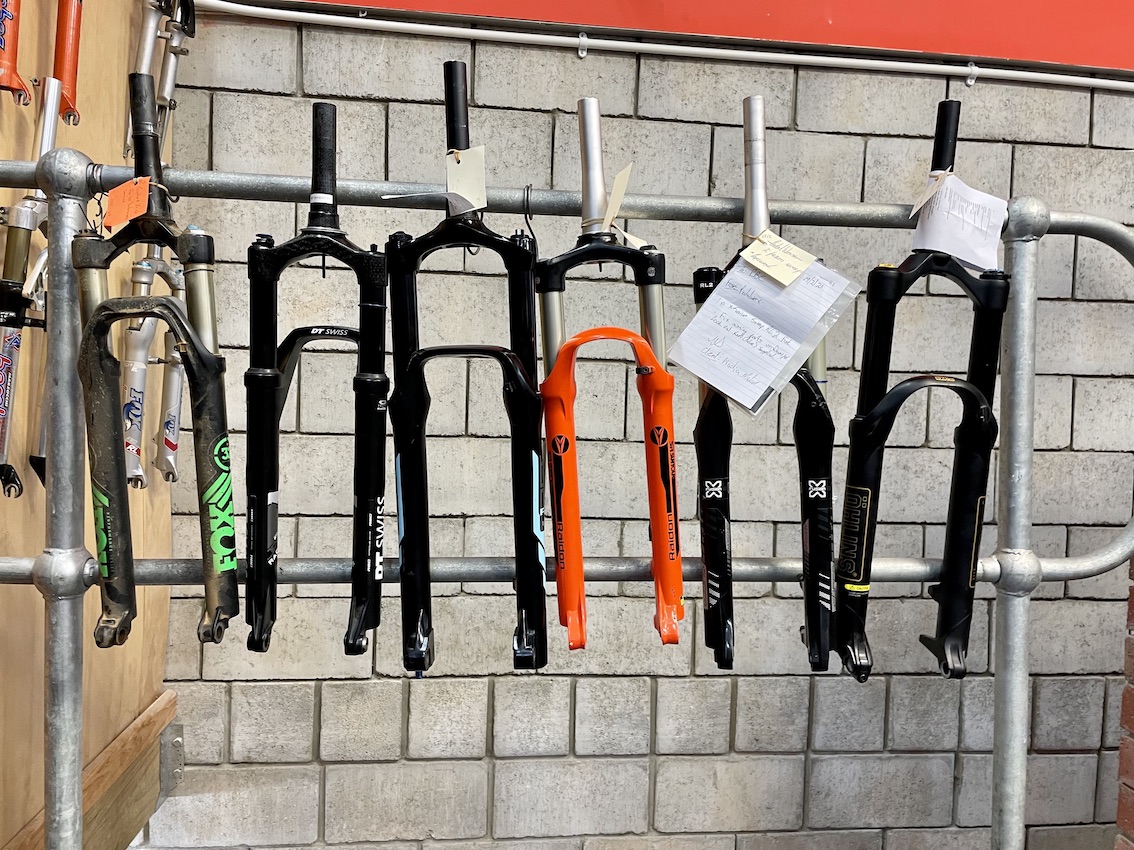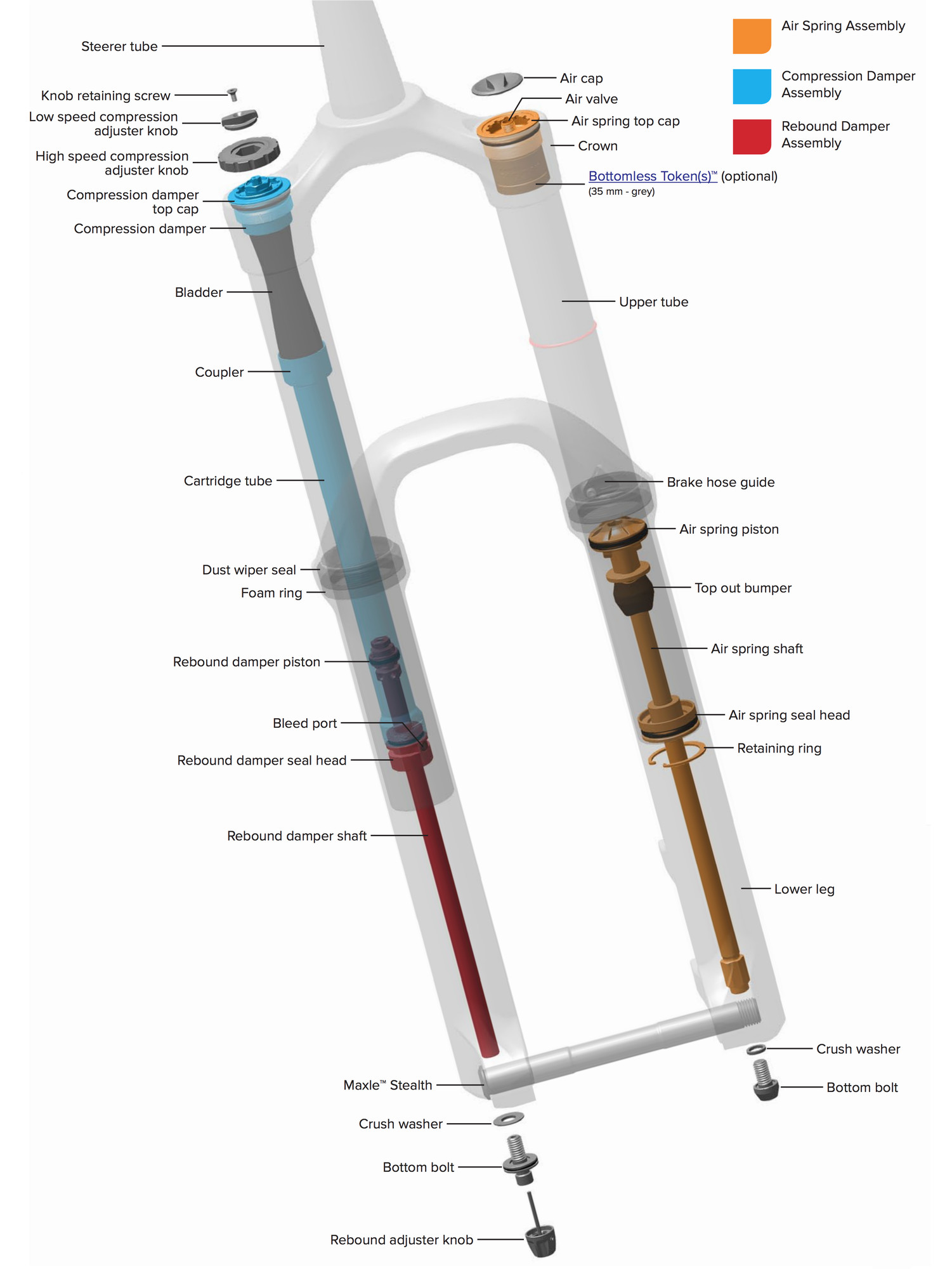How much do you really know about your mountain bike’s suspension fork? Do you know your ideal air pressure? Do you know when your fork needs to be serviced? Do you know how to clean it? So many questions. We asked South Africa’s premier mountain bike suspension expert, Robbie Powell of Robbie’s Bicycle Concept to answer some suspension fork questions.
By Sean Badenhorst

Robbie Powell has spent almost 30 years working on mountain bike suspension. He still owns an early Marzocchi DH3 fork with 4 inches (100mm) of travel, which helps him appreciate just how far mountain bike suspension design has come. Using specialised technology and specific machinery, he showed me that nearly 200 Newton Metres of force is required to get the early 1990s Marzocchi fork just to start moving, whereas a modern Rock Shox 120mm fork starts moving almost immediately without much force.
The progress made in suspension fork technology for mountain bikes is remarkable. As Powell – who insists we refer to him as more informally as Robbie – points out, a lot more R&D has gone into mountain bike suspension design in the past three decades than what has gone into motor cycle or motor car suspension.
“It’s the weight. With cars and motor bikes, suspension weight isn’t really a consideration. But with bicycles, weight-trimming is critical because we want bicycles to be as light as possible. So, we have a range of suspension designs for mountain bikes now and the engineers have never really stopped looking for better ways to make efficient, light mountain bike suspension.
“Fortunately, the objective of suspension hasn’t changed. It’s made to offer greater control and increased comfort. But there are so many small parts involved now and each brand has something unique, which makes it important to have suspension serviced and repaired by suspension experts, which is what we specialise in at RBC,” explained Robbie.
Most of us have suspension on our mountain bikes – either front and rear or just front. But do we know much about it? Robbie and his team of technicians at RBC only work on suspension. They do servicing and repairs on forks, shocks and also dropper seatposts. They have worked on every suspension design and model there is, so have plenty of expertise and experience.
For this article, we’re focussing only on suspension forks, so we ran these burning questions by Robbie:

Robbie Powell performing a service on a suspension fork at RBC in Port Elizabeth.
What is the most common problem you see with suspension forks that come in?
Lack of service. Most come in with stiction, which is very rough, sticky movement of the fork. It should be silky smooth! Think of a motor car’s engine where the pistons drive the crankshaft. Oil is needed between the bearings and crankshaft; and seals hold the oil in place. A mountain bike suspension fork is the same. There’s oil in the lowers. When the fork compresses, the oil pushes up through a tiny 0.8mm gap into the foam wiper so that there is no friction at the stanchion/bushing contact. Like a car engine, this needs regular attention. This is what a service is for.

What is the best way to prevent this problem?
The general rule is to have a lower-leg service every six months or 50 hours of riding, depending on what the brand recommends. For a full fork service, at least once a year or 100 hours of riding. It also depends on the riding. For example, a full service should be done after an event like the Absa Cape Epic because of all the dust and bike washing happening daily. At RBC, we do the full service.
What do you do to service a mountain bike fork – what is the process?
It depends somewhat on the brand. For Fox forks, we fit new dust and foam wipers, do an air service, a vacuum bleed and an oil replacement. And If necessary a bushing resizing. We also replace damper oil on every single fork we work on. For Rock Shox, we do a full factory rebuild with the necessary new dust wipers, foam wipers and seals. These are the two most popular brands, but other brands follow a similar process.
How long does it take to service a suspension fork?
It takes us at RBC up to one hour. Often less, but sometimes there’s a challenge that we need to overcome, so we allocate one hour. But we have all the right tools, technology and trained technicians who do this all day, every day.
Can local bike shops service suspension forks?
We encourage all bike shops to understand all the suspension they sell and to be able to do a lower-leg service or an ‘air can’ service. We also offer training in this regard. However, for more extensive services and rebuilds, we recommend sending suspension to RBC or a similar service centre with the correct tooling, equipment and expertise.
What is the best way to care for a suspension fork to ensure it works efficiently for as long as possible?
Wash your bike regularly, but avoid using high water pressure on the suspension. You don’t want water to seep into your suspension. Once dry after the wash, wipe the stanchions and dust wipers with a damp cloth to remove any debris and apply something like RSP Hyper Wiper oil to keep them lubed. Push the fork down a few times and then clean any excess off to avoid a build-up of grime. Here’s a video to show you how.
How often should a mountain biker check his/her suspension fork setting?
You should check the pressure at least once a week. The rebound you set and forget, unless you are changing the fork pressure from your normal setting, then you will need to adjust the rebound accordingly. Everyone with a mountain bike should own a shock pump so that you can check and maintain your ideal pressure. Don’t get caught up in pressure numbers though, that’s not important. What is important is the sag measurement. This is personal as it’s your body weight on your bike. For a suspension fork, you generally want to have 20% of the total travel as your sag measurement. On a 100mm fork, that’s 20mm, obviously.
Tell us more about avoiding washing your suspension with a pressure washer.
Your fork dust wipers are not designed to keep high pressure water out. Their role is to keep the lubricating oil inside the fork and prevent dust, grime and mud from entering the fork when riding. It’s best to keep high-pressure washers away from your suspension.
Check out the RBC Tech Help section for more useful videos.


